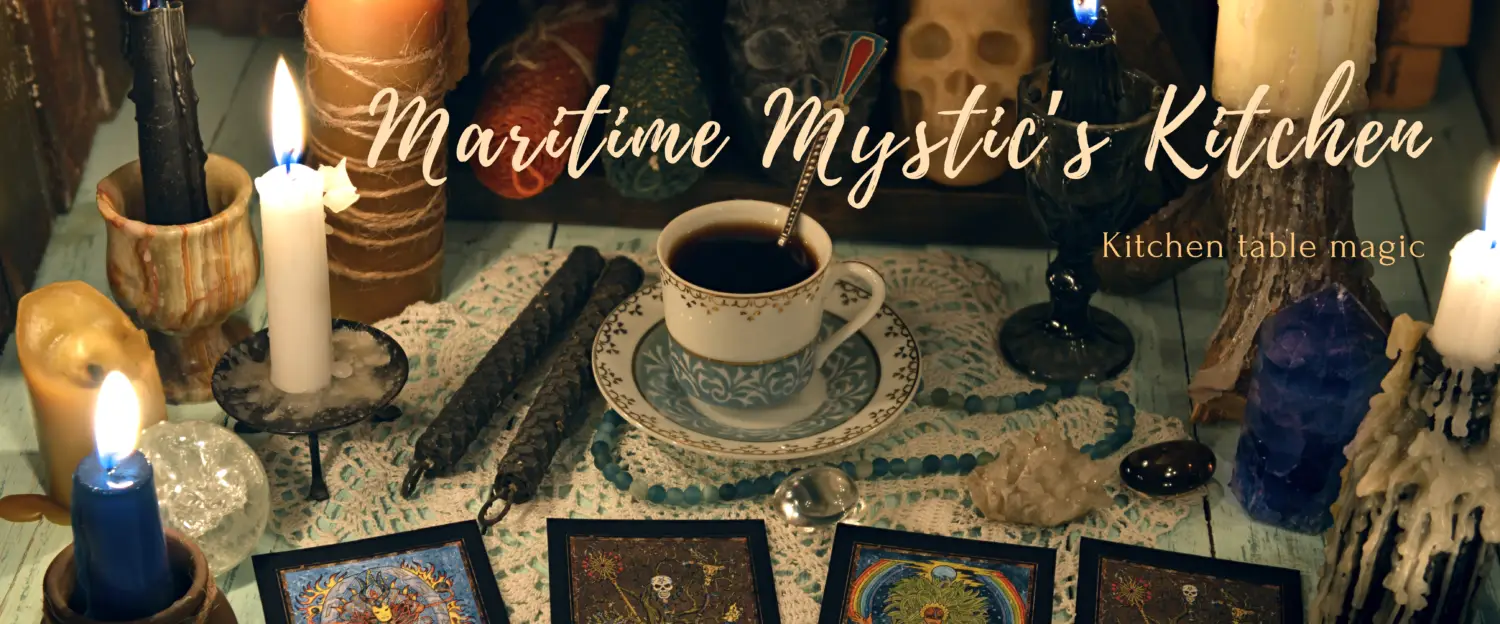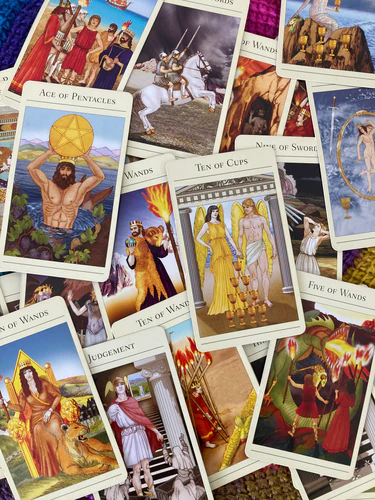I teach Numerology using Tarot and so I teach Tarot using Numerology. A lot of people are intimidated by Tarot decks when they first investigate them. After all, they’re a busy bunch of cards. There’s a lot to look at on each Tarot card and sometimes our intuitive mind gets too many hits at once. This is especially true of beginners and for many, Tarot cards unlock the parts of our unconscious minds that start us on our journey of spiritual awakening.
I‘m not going to get into what a Tarot deck is or how to buy your first deck. This post assumes you have done that and are at least somewhat familiar with the cards. This post is for those of you becoming overwhelmed and drawing a complete blank when you use Tarot cards.
- Read your own cards. A lot of new users get their cards and go straight to social media to do readings for others. This level of confidence is great, but you need time to get used to the cards. There’s only so many ways you can say “A great change is coming” before it gets old. Set aside time every day to read your own cards. Morning coffee time is excellent for this. Even if it’s only 15 minutes, that’s so much better than no time at all.
- Write down your readings. I have stacks and stacks of Dollar Store composition journals in my basement. For many years that is what I used. These days I use loose leaf in a binder so I can shuffle things around. I recommend paper because it doesn’t crash, get hacked, or require updates. You don’t have to pay for it monthly and if you run out you can get more at the store. Maybe it’s my age, but writing on paper feels so much more mindful than tapping away into a note app – but however you do it, make a record. After a couple of weeks you’ll see trends in the cards. This is how you create a lexicon of your own meanings.
- Look for common themes in the pictures. Are all of the images in the cards happening at night? Are they sunrise cards? Is the weather good or are there stormy skies? Do the cards depict the orderly flow of time, such as a procession of seasons or moon phases? Are there a lot of people talking in the images? Do most of the cards show people isolated from others or do they appear to be choosing solitude? Is there a certain building or location being repeated in the cards? Noticing what is going on in each picture as it relates to the ones around it can be helpful, especially when you have a brain fart.
- Identify people in your life. Sit down with your Tarot deck, shuffle, and ask the cards to show you people in your life: your parents, close friends, significant others, coworkers, the neighbor who takes your parking spot. Write this down. One of the things that stumps new Tarot readers – and it isn’t the only thing – is identifying people. They don’t always come up as court cards.
- Practice storytelling with Tarot. This is one of my favorite things to do. Lay out a large spread of cards, face down. This is important because you won’t need to see every card. Try laying down a large diamond spread or five rows with each row containing seven cards. The first row is the beginning of your story and the last row is the end, Only turn over cards that you feel need to be turned over. Let your mind relax and start by voicing what you see: “This is a young man. He is walking down a country road. It’s sunny out and the fields are green – it must be summer. He’s got a little bag of money – he must be going to do some shopping.” With each row develop your story. This is a “choose your own adventure” story, in that you decide how many cards get turned over. Quite often when I do this, I end up developing other adventures based on parts of the original storytelling spread.
- Learn some basic astrology and numerology. Tarot cards may have been developed as a card game for wealthy Europeans but coincidentally enough, they are also flash cards for esoteric teachings. Hmmm. You don’t have to become an astrologer or numerologist, although some people do study those fields after learning Tarot. It is very helpful, though, to have at least a basic understanding of planets, zodiac signs, and numbers. You will begin to see that those things are reflected in the card meanings. This is especially helpful when you’re ready to go deeper with the cards: want to know more about The World? Study Saturn returns through the signs. Want a deeper dive into the 8 of Cups? Study the number 8 as it relates to reevaluation, attraction to power, and the 8 Heart Number.
- Don’t go broke buying Tarot decks. These days social media and smart phones have put the world into our hands. Rather than make us smarter, we’ve become a culture of shopping addicts. Instead of buying deck after deck because the one you have isn’t doing it for you, use the internet to view images and videos of the deck in question BEFORE you buy it. It’s tempting to buy all the things, especially when we see such carefully curated videos on social media but remember there is a difference between a practice and an aesthetic. A lot of the folks with all the crystals and all the cards don’t actually use them all, they’re there for their looks. Someone who creates content about Tarot, witchcraft, astrology, etc is not the same as someone who practices it. You’re better off getting to know one or two decks really well than being a broke dilettante with lots of flashy things.
- Craft your own “ancient” tome. I’m an artist and I love to write. Over the last two years I’ve begun to write down what I know into leather journals containing handmade parchment. I use ink, watercolor, paintable graphite, gouache, and colored pencil. You may not feel particularly crafty but this is a great way to learn. Many witches keep Grimoires and Books of Shadows. If you go to Pinterest, there are many examples of art journaling. Although I don’t do it online, I do present some of my in-person clients with parchment scrolls containing their charts, done in ink and brushwork. Cultivating your artistic side will definitely help you in your spiritual journey.

